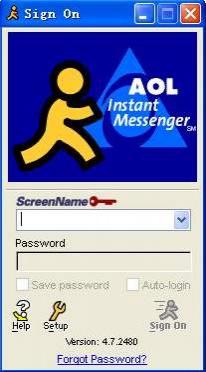Trying to Keep the Web Out of K-12 Classrooms
 Ten years ago, I wrote a post here about how K-12 school districts were being quite protective about content that comes into their classroom via the Web. They have good reasons to be more protective and wary - laws and parents, for example - than higher education. Looking at my older posts here is a kind of educational time travel.
Ten years ago, I wrote a post here about how K-12 school districts were being quite protective about content that comes into their classroom via the Web. They have good reasons to be more protective and wary - laws and parents, for example - than higher education. Looking at my older posts here is a kind of educational time travel.
In 2006, I was observing from my university position a lot of filtering of content in the K-12 world. I was thinking back to when I had taught in a NJ school district in the 1990s and was also acting as a computer coordinator.
It seems strange that it was only on October 24, 1995 that the FNC unanimously passed a resolution defining the term Internet. Back then, we were already swapping stories at conferences about the things kids were doing on our school computers and wondering how we would "filter" out the bad stuff.
There were a few radicals who thought we shouldn't filter out anything, but the majority used a library comparison. The librarian is a professional who decides what books get into the school; we will have to be the professionals who decide what online content gets into the school.
In 2006, there were schools blocking Google Earth. Why? Because it had a "chat" feature in it and schools blocked all chat. They were blocking AOL Messenger early on and MySpace and social networking sites. They were blocking this Serendipity35 blog. Not that they had anything against me -they were blocking all blogs.
Most of this was done at a server level with blocking software. In the 90's my school had filters in place and we were constantly uncovering hundreds of flaws. The common examples were instances like filtering "breast" so kids didn't see nude pictures, but also blocking sites that could be used for research on cancer. The filtering net was very wide.
The only discussion in the schools about the complexities of using the Internet in classrooms was going on in meetings and faculty rooms by adults and not in the classrooms with students. It's the bad side of in loco parentis as we also "protected" teachers from being better users of technology and perhaps even better-informed educators.
With technology, sometimes schools are trying to control something they don't really understand.
The term "Web 2.0" isn't heard much any more. It referred to the web that was becoming rich in interactivity, a read/write web, social networking, collaboration and community building.
That change became a big wave and has not gone away. And schools, particularly in the K-12 sector, still are having issues with it as a part of education. Have students use those computers in their pockets in class, or collect them and hide them during class. If schools do not help students explore new tools, students will explore on their own and schools are less relevant to their lives and the larger world.
My time traveling in this topic from within this blog turned up old headlines like "MySpace.com is facing a new threat on Capitol Hill" and "Kids outsmart Web filters." Given another decade, perhaps I will write about how odd it seemed that in 2016 we would still stop students from using smartphones in class.
Trackbacks
Trackback specific URI for this entryThe author does not allow comments to this entry
Comments
No comments